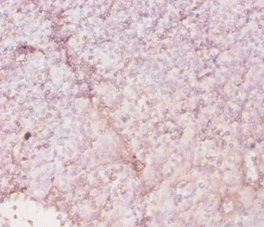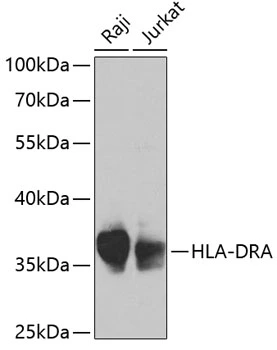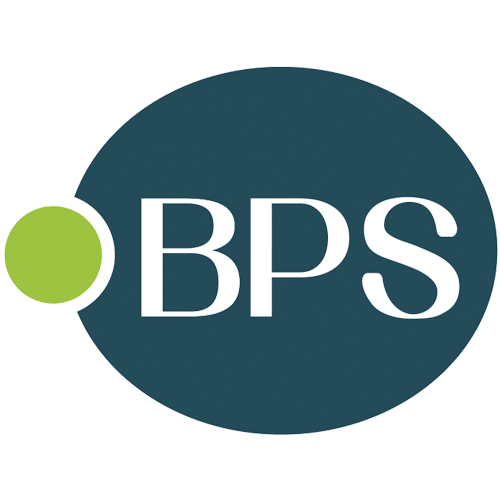HLA-DRA antibody [N2C3]
GTX113732
ApplicationsImmunoFluorescence, Western Blot, ImmunoCytoChemistry, ImmunoHistoChemistry, ImmunoHistoChemistry Paraffin
Product group Antibodies
TargetHLA-DRA
Overview
- SupplierGeneTex
- Product NameHLA-DRA antibody [N2C3]
- Delivery Days Customer9
- Application Supplier NoteWB: 1:500-1:3000. ICC/IF: 1:100-1:1000. IHC-P: 1:100-1:1000. *Optimal dilutions/concentrations should be determined by the researcher.Not tested in other applications.
- ApplicationsImmunoFluorescence, Western Blot, ImmunoCytoChemistry, ImmunoHistoChemistry, ImmunoHistoChemistry Paraffin
- CertificationResearch Use Only
- ClonalityPolyclonal
- Concentration0.18 mg/ml
- ConjugateUnconjugated
- Gene ID3122
- Target nameHLA-DRA
- Target descriptionmajor histocompatibility complex, class II, DR alpha
- Target synonymsHLA-DRA1, HLA class II histocompatibility antigen, DR alpha chain, MHC class II antigen DRA, histocompatibility antigen HLA-DR alpha
- HostRabbit
- IsotypeIgG
- Protein IDP01903
- Protein NameHLA class II histocompatibility antigen, DR alpha chain
- Scientific DescriptionHLA-DRA is one of the HLA class II alpha chain paralogues. This class II molecule is a heterodimer consisting of an alpha and a beta chain, both anchored in the membrane. It plays a central role in the immune system by presenting peptides derived from extracellular proteins. Class II molecules are expressed in antigen presenting cells (APC: B lymphocytes, dendritic cells, macrophages). The alpha chain is approximately 33-35 kDa and its gene contains 5 exons. Exon 1 encodes the leader peptide, exons 2 and 3 encode the two extracellular domains, and exon 4 encodes the transmembrane domain and the cytoplasmic tail. DRA does not have polymorphisms in the peptide binding part and acts as the sole alpha chain for DRB1, DRB3, DRB4 and DRB5. [provided by RefSeq]
- Storage Instruction-20°C or -80°C,2°C to 8°C
- UNSPSC12352203
References
- MLLT6 maintains PD-L1 expression and mediates tumor immune resistance. Sreevalsan S et al., 2020 Dec 3, EMBO RepRead more



![FACS analysis of human peripheral blood lymphocytes using GTX01489-06 HLA-DR antibody [LN3] (FITC). Solid lone : primary antibody Dashed line : isotype control antibody amount : 0.25 microg (5 microl)](https://www.genetex.com/upload/website/prouct_img/normal/GTX01489-06/GTX01489-06_20200428_FACS90_w_23053121_951.webp)
![FACS analysis of human peripheral blood monocytes using GTX01489-10 HLA-DR antibody [LN3] (PE-Cy7). Solid lone : primary antibody Dashed line : isotype control antibody amount : 0.125 microg (5 microl)](https://www.genetex.com/upload/website/prouct_img/normal/GTX01489-10/GTX01489-10_20200428_FACS152_w_23053121_674.webp)



